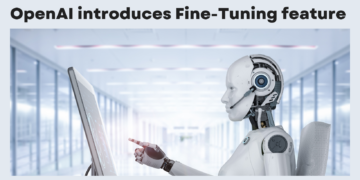AI is becoming increasingly important for businesses of all sizes. However, training AI models can be a time-consuming and expensive process. One of the biggest challenges is data annotation, the process of manually labeling data with relevant information. This can take up to 80% of the time and resources dedicated to AI projects. Active learning is a technique that can help to accelerate AI model training. It works by allowing the AI model to query a human expert for labels on data points that are most likely to improve the model’s accuracy. This can significantly reduce the amount of unlabeled data, leading to faster, more cost-effective training.

Benefits of Active Learning
Active learning offers a number of benefits over traditional supervised learning methods:
- Faster training: It can reduce the amount of data, like unstructured data tangled up inside your systems that needs to be labeled by up to 90%. This can significantly shorten the time it takes to train an AI model.
- More accurate models: It can lead to more accurate AI models than traditional supervised learning methods. This is because the AI model is able to focus on the data points that are most likely to improve its accuracy.
- Reduced cost: It can reduce the cost of AI model training by reducing the amount of data that needs to be labeled.
How It Works
Active learning works by allowing the AI model to query a human expert for labels on data points that are most likely to improve the model’s accuracy. The AI model does this by using a variety of techniques, such as uncertainty sampling, query by committee, and expected error reduction.
Uncertainty sampling: This technique queries the human expert for labels on data points that the AI model is most uncertain about. This is because these data points are the most likely to improve the model’s accuracy.
Query by committee: This technique queries the human expert for labels on data points that are predicted differently by a committee of AI models. If the data points are mislabeled, and therefore the most likely to improve the model’s accuracy.
Expected error reduction: This technique queries the human expert for labels on data points that are expected to have the greatest impact on the model’s accuracy. You can use a number of factors to calculate this. Useful factors include, the model’s current confidence in the data point and the importance of the data point.
Implementing Active Learning
There are a number of ways to implement active learning in your business. One option is to use a commercial active learning tool. These tools provide a variety of features that can help you to implement active learning effectively, such as:
- Data management: These tools can help you to manage your data, including labeling data points and tracking the model’s progress.
- Model training: These tools can help you to train your AI model using active learning techniques.
- Human-in-the-loop collaboration: These tools can help you to collaborate with human experts to label data points.
Another option is to implement active learning yourself. This can be a more challenging option, but it can also be more cost-effective. If you choose to implement it yourself, you will need to develop your own active learning algorithm. There are a number of resources available to help you with this, such as online tutorials and research papers.


























